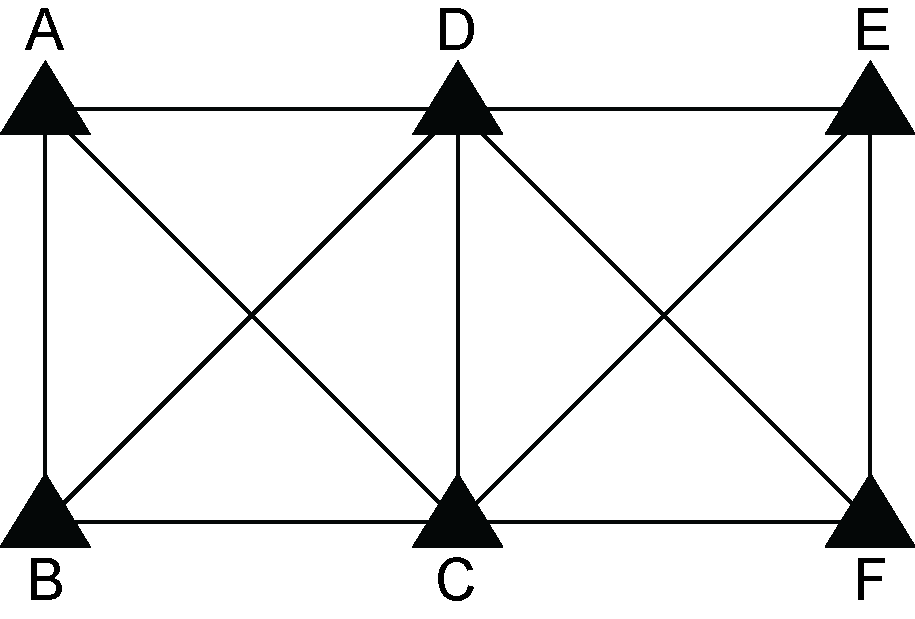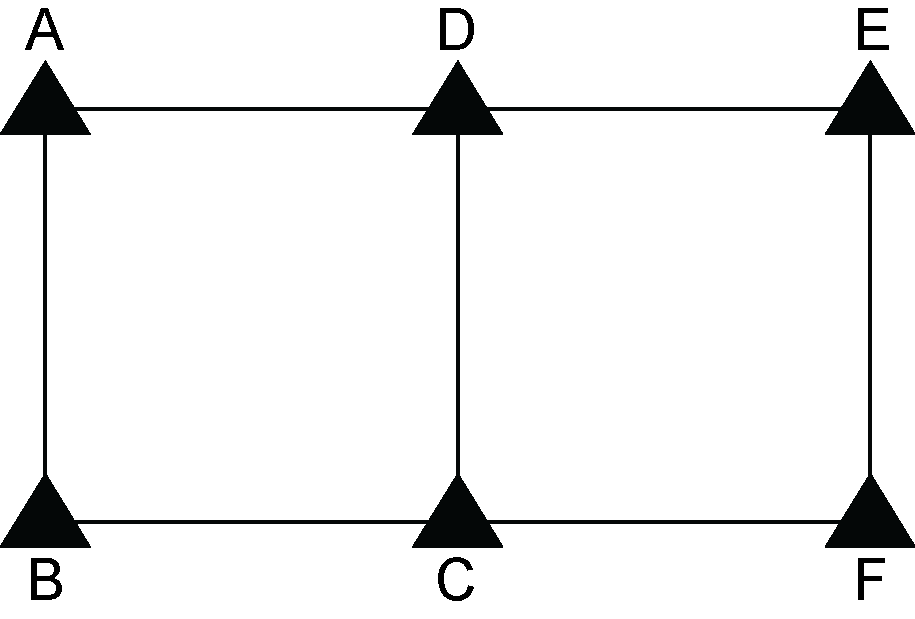Ignore Trivial Sessions
GrafNet defines trivial baselines as those that are unnecessary as a result of multiple receivers simultaneously running. The problem with this is that the baseline solutions computed by GrafNet are correlated, and so they are dependent. Removing trivial baselines reduces these dependencies, while still maintaining a closed loop. It also creates a network where the standard deviations reflect the actual errors more accurately.
Consider the network in Figure: Trivial Baselines. The six stations are surveyed with four receivers during two one-hour sessions. During the first session, stations A, B, C, and D are observed. During the second session, the points C, D, E, and F are observed.
This network can be divided in two sub-networks, formed by the first and second time periods. Before the trivial baseline removal, every baseline in these two sub-networks is dependent on the other baselines. These dependencies cause the loop ties to be low.
With four receivers or more collecting data at the same time, a sub-network is very over-determined. Using three GPS receivers, the network is still over-determined, but all baselines need to be included to form a closed loop. GrafNet removes these dependent or trivial baselines by creating a single loop that connects all of the points in the sub-network. Figure: Network with Trivial Baselines Removed illustrates that it is easy to remove these baselines.
With four receivers, there are two dependent baselines in each sub-network. GrafNet removes these trivial baselines for each sub-network. Figure: Removal of Trivial Baselines shows two possibilities of what GrafNet might do with the first sub-network.
GrafNet removes the trivial baseline by setting their session status to Ignore. It is possible to unignore any session by simply changing its status back to Unprocessed. GrafNet tries to keep the sessions that are of best quality. The following criteria is considered:
-
The amount of time the baseline was surveyed.
-
The frequencies used in the surveying of the session.
-
The length of the baseline.
-
The number of connecting baselines to the two end-points.
As shown in the figure Figure: Network with Trivial Baselines Removed, GrafNet automatically excluded AC, BD, CE, and DF. It then forms a single loop for each of the time periods. DC is a baseline with a duplicate session.


